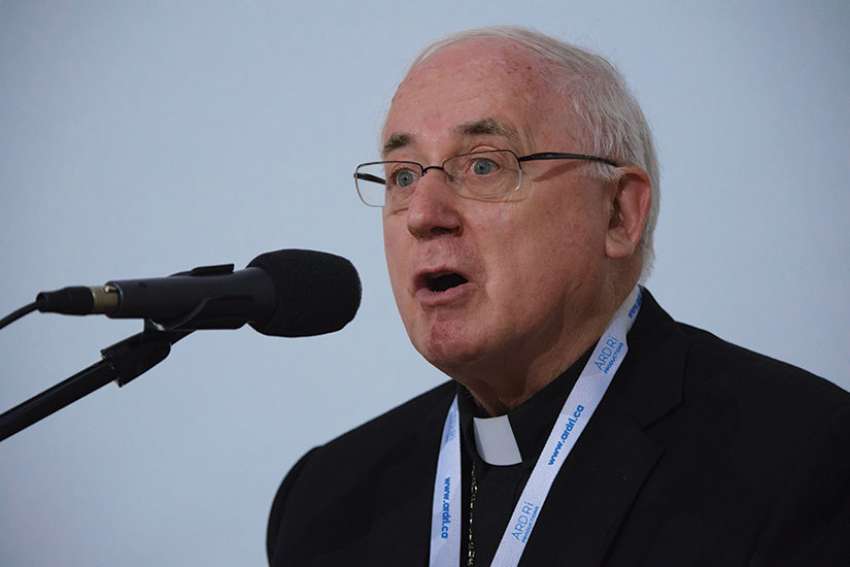Or, as Archbishop Gerard Pettipas put it: “I hope not!”
Some have reacted as if we’re immediately going to start re-translating the six-year-old missal used at Mass, said Pettipas, who chairs the commission that overseas liturgy and sacraments for the English language Canadian bishops.
“I wouldn’t want to see us revisit this whole process,” said the archbishop of the Grouard-McLennan diocese in northern Alberta. “We just finished these translations. Let’s live with that for a while.”
That sentiment was echoed by Archbishop Terrence Prendergast of Ottawa, who serves on the international Vox Clara Committee that advises the Vatican on liturgical translations.
“I doubt very much there’ll be a great desire,” he said. “It’s very expensive to publish new materials.
“We’ve got a certain amount of calm right now,” he said, adding that “although no translation is perfect,” it would be better to wait for a new generation of bishops to revisit the 2011 translation.
“I think we need to find stability in the liturgy,” he said. “That’s the way we pray. We can’t be changing it every 10 years.”
Prendergast conceded there’s nothing to stop individual bishops from raising the issue in Cornwall during the Sept. 25-29 plenary of the Canadian Conference of Catholic Bishops.
The Pope changed canon law to give national bishops’ conferences a voice on how liturgical texts are translated into vernacular languages. In the past, the Vatican established translations that were to be employed around the world. Now national and regional bishop conferences can “faithfully prepare” translations and in a spirit of dialogue and working within “defined limits” submit proposed changes to the Vatican, where they will be reviewed to ensure the texts are “rendered fully and faithfully.” If the criteria is met, the Vatican’s role will be to approve the texts.
The CCCB secretariat in Ottawa would not comment on the implications of the motu proprio issued by Pope Francis Sept. 3.
The change by Pope Francis is widely regarded as his attempt to implement the spirit of Vatican II.
“This is not a large departure,” said Pettipas. “As I read the motu proprio, it struck me the Holy Father is trying to reestablish a proper relationship intended at Vatican II between bishops and the Holy See.”
The text of the papal letter starts by talking about “the relationships of bishops and bishops’ conferences and the Holy See,” Pettipas said. “The Holy Father wants to ensure it’s the right relationship.”
Pettipas sees the greatest impact of the motu proprio in the translation of liturgy into various Indigenous languages, such as Cree, and for countries where there are a number of different languages.
Six years after the 2011 missal was introduced, there is still some grumbling by priests and lay people that the new translation is awkward and harder to understand. Pettipas said it’s especially hard for priests whose first language is not English.


